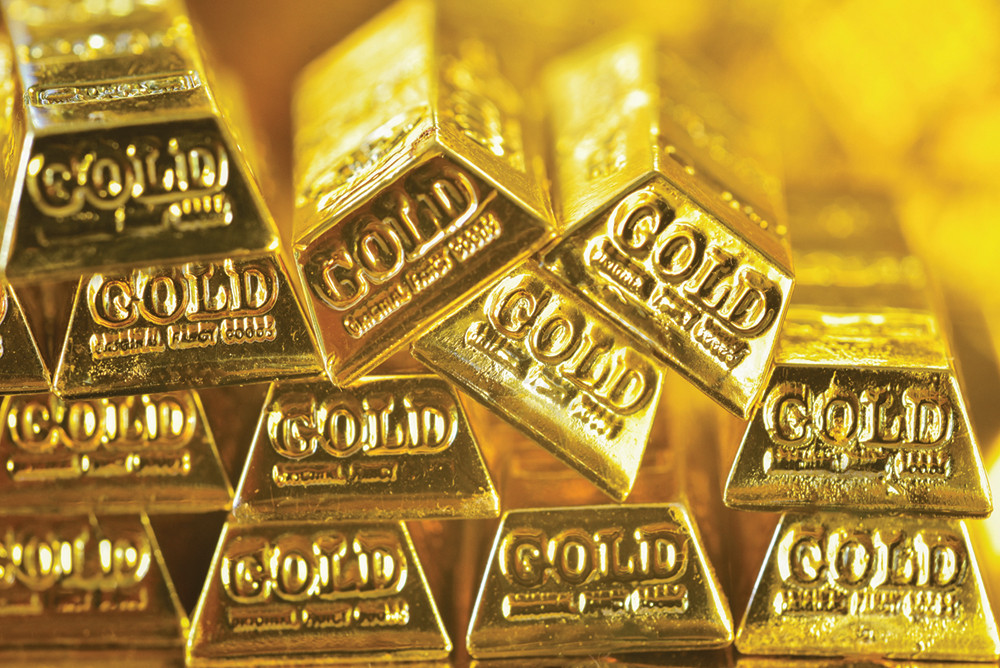In 2023, gold has been the game-changer thus far with prices swaying on the bullish and bearish side in equal measure. Traders have rekindled their hopes in the yellow metal with every move up and down presenting opportunities. At the start of the year, gold had started at $1,822.79 per ounce before gathering momentum to summit to an all-time high of $2,080.07 per ounce in May.
Since the accomplishment, gold has declined and is currently trading at $1,938.27 per ounce at the time of this article. If we go back further, gold has endured a volatile time. In March 2022, due to the Russia-Ukraine conflict, the price of the bullion jumped to a high of $2,070.16 per ounce before slumping to $1,614.61 per ounce in September due to a steady sell-off hindering the rise of gold. Gold rallied strongly breaking the resistance level of $2,000 per ounce in March 2023 on the back of the collapse of the Silicon Valley Bank in the USA before losing its shine and slumping once again. The bullion is driven by a mixed bag of factors that could either propel it upwards or push it downwards.
Safe Haven Status
Gold prices briefly broke through the traditional barrier of $2,000 per ounce in early 2023 corroborating its safe haven status. The issues surrounding the collapse of the Silicon Valley Bank coupled with the forced takeover of Credit Suisse by UBS led to traders buying gold to seek stability. Likewise, numerous factors including rising yields, strengthening US dollar and sustained hawkish sentiment led to the price drops. Also, developing geopolitical tensions and concerns that the United States could enter a recession in 2023 helped to support the price above the $1,900 level.
The bullion also received a boost from the optimism surrounding the lifting of the Covid 19 restrictions in China at the start of 2023. China, having the world’s largest gold market, had a return of positive consumer confidence thereby increasing the demand for gold. However, the rally was brief as concerns mounted over the outlook for China’s economy and a potential debt market crisis.
In recent times, proof that inflation in the US is undergoing moderation is providing support for gold, as it reduces interest rate expectations going forward raising the appeal of the bullion to the traders.
Headwinds
The value of gold still faces several headwinds despite the tailwind factors mentioned above. Analysts opine that although the strength of the US dollar has fallen back from the highs witnessed in the second half of 2022, prices remain supportive by recent historic standards. Prices are heavily influenced by the US dollar. An appreciating dollar correlates negatively with the dollar as the purchase outside of the US is more expensive as the metal is denominated in the US dollar. The outlook of the US dollar is uncertain shortly with much depending on whether the US economy enters a recession phase, the direction of inflation rates and the future path of the Fed’s interest rates.
Impact of Interest Rates
In short, interest rates have a negative relationship with the price of gold. With the rates remaining high and still rising, fixed-income assets are an attractive alternative to gold. But an end to the current rate hiking cycle could positively impact the price of the bullion. In July 2023, the Federal Reserve resumed hiking the interest rates with Chair Jerome Powell leaving open the possibility of further rate hikes. Following this, the market was placing the highest probability of rates remaining unchanged for the rest of 2023. The central bank faces a tough balancing act needing to bring down inflation on one side, but also managing the impact of high interest rates on the economy. While the risk of a recession seems to be receding, the Fed still needs to rapidly reverse the monetary policy to support the inevitable growth of the economy.
Weakening Demand
According to the World Gold Council, 2022 was the strongest year for gold consumption for the last 10 years. The consumption of the bullion increased 18% to 4,741 tonnes mainly driven by a 10% rise in the purchases by traders as well as strong purchases by central banks to promote stability. However, demand for gold in the first quarter of 2023 declined by 13% year-on-year. The sustained purchases by the central banks and an increase in buying by the Chinese consumers were not adequate to offset the lower investors’ demand and the weak consumption in India, where the high prices dampened the consumer’s appetite for the bullion.
What Next?
The outlook for gold is finely balanced between tailwinds and headwinds factors. The above factors suggest that market participants are monitoring the market for any sudden reactions to the many factors affecting gold – from the US dollar to the interest rates environment. Gold price faces numerous possible scenarios thereby propelling gold as the most-watched financial instrument for the remaining part of 2023.





